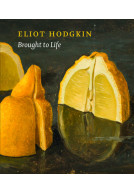Sacred Stitches (Paperback)
Ecclesiastical Textiles In The Rothchild Collection
(click here for international delivery rates)
Order within the next 9 hours, 32 minutes to get your order processed the next working day!
Need a currency converter? Check XE.com for live rates
Sacred Stitches accompanies an exhibition that will assemble together for the first time fragments of opulent and unique ecclesiastical textiles drawn from the stored collections at Waddesdon Manor, the astonishing Renaissance-style château that is one of the rare survivors of the splendor of the ‘goût Rothschild’. Dating from c. 1400 to the late 1700s, the textiles were acquired by several members of the Rothschild family, the greatest collectors of the 19th century, who sought the highest quality of workmanship with a keen sense of historical importance. The textiles were prized for their technical and artistic brilliance. Parts of altar frontals, vestments and other church furnishings, they survive as fragments, cushions, banners, hangings and furniture upholstery, as their original purposes were altered to suit tastes and interior styles of the late 1800s. Baron Ferdinand de Rothschild used them in the Bachelors’ Wing at Waddesdon, the first part of the house to be completed in 1880. His sister, Alice, also had an eye for the finest ecclesiastical embroideries, displayed as decorative hangings in her own house nearby. A passionate collector of costume and textiles, Ferdinand and Alice’s niece, Baroness Edmond de Rothschild, shared their interest and added to the collection.
Rachel Boak, Curator at Waddesdon Manor, first considers the changing manufacture and style of vestments and furnishings for the Church in the Medieval and early Renaissance period, as well as the impact of the Reformation and the French Revolution, when many vestments and textile furnishings became redundant, were destroyed and their precious metal threads melted down. Her main focus, however, is the collecting habits of Ferdinand, Alice and Baroness Edmond in the context of 19th-century Britain, where George IV’s historicizing coronation of 1821, at which guests wore Tudor-style dress, had brought about a renewed interest in Medieval and Renaissance collecting, design and costume, and the Oxford Movement in 1833 meant a revival of vestments associated with the celebration of the Eucharist.
Each Waddesdon object – its iconography, manufacture and history – is considered individually, illustrated with beautiful new photography that captures all the detail, texture and intricate stitching.











